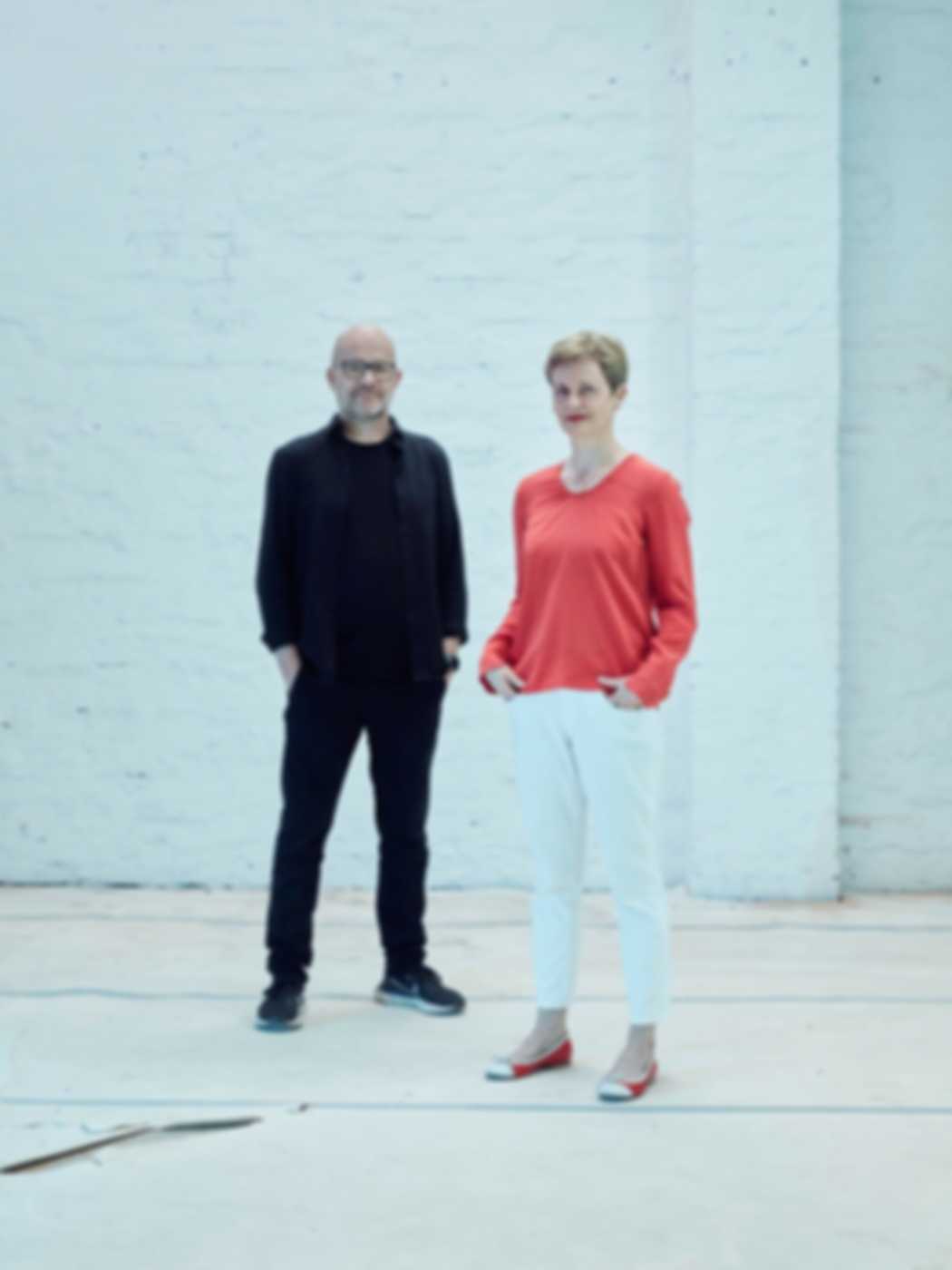CREATING THE FUTURE WE WANT
The Federal Agency for Breakthrough Innovation was established three years ago. In this interview we will be looking back and forward with the SPRIND leadership team, Berit Dannenberg and Rafael Laguna de la Vera.
WHY IS SPRIND NEEDED?
RAFAEL LAGUNA DE LA VERA: In Germany today, we are still largely living off the prosperity created during the invention and founding boom of the second half of the 19th century: the world’s pharmacy, the world’s chemical plant, the world’s car factory etc. During this period, we successfully created and built new industries. However, over the past 80 years or so we have rested too much on these laurels. The companies and industries which are relevant today—particularly in the computer hardware and software sectors—have been established and built up in the US and Asia. The purpose of SPRIND is to help (re)establish new industries and value chains in Germany and develop their economic potential.
WHAT NEEDS TO BE IMPROVED?
BERIT DANNENBERG: There is no shortage of talent and well-educated minds who want to make a difference. The basic research being carried out at universities and extra university research institutions is of world-class calibre. What we have forgotten, though, is to follow through by making new, innovative products, services and companies - translating this new knowledge into application. To some degree, we also have become a victim of our own success, as automotive, electrical, chemical & mechanical engineering and other industries have been so exceedingly successful globally thanks to their incremental improvements over the past decades. In the future, though, this will not be enough. To secure value creation and technological sovereignty in the coming decades, we will once again need real innovations—and companies able to master them—in Germany as well as in Europe.
WHAT IS THE ROLE OF A FEDERAL AGENCY HERE?
RL: Contrary to popular opinion, it is just not true that the biggest innovations arise out of the free market alone. This also applies to the US. DARPA—the state-run innovation agency founded by President Eisenhower together with NASA in 1958 to win the space race against the Soviet Union triggered by the Sputnik shock—assists in bringing about innovations in the hardware and software industries in Silicon Valley, California today. The crucial factor here has always been that DARPA and NASA has financed the development of new technologies at a stage when private financiers were not ready to take on the financial risk.
BD: SPRIND has adopted this DARPA principle by bridging the so-called Valley of Death
between basic research and commercial viability. We concentrate on technical innovations which have the potential to significantly improve our lives and lay the foundations for new industries in Germany. We are open-minded when it comes to choosing subject areas, as long as they serve primarily civil purposes.

WHAT IS NEW AND DIFFERENT ABOUT WHAT YOU DO?
RL: In addition to project submissions, where we have reviewed and evaluated over 1,000 open-topic propositions so far, we have developed SPRIND Challenges—a new tool for the targeted identification of solutions to large-scale problems relevant to society today. In contrast to the way innovation competitions used to be handled, we simultaneously fund a number of teams with different approaches to a topic, instead of only one or two teams as before. We are now also able to fund teams outside the usual group of grant recipients—that is, startups, SMEs and individual innovators.
At the end of each year, specialists evaluate the progress of the teams and decide which ones will continue to receive funding for the upcoming cycle. By doing it this way, we do not have to commit to a single technology in advance, but can instead follow different approaches and see which one leads to optimal outcomes. To implement this parallel funding
in a way that is compliant with state-aid rules, we use an innovative new financing tool called Pre-Commercial Procurement.
To date, we have started a total of four SPRIND Challenges on a wide variety of topics, which have attracted applicant teams from both inside and outside Germany.
WHAT KINDS OF FINANCING TOOLS DOES SPRIND HAVE AT ITS DISPOSAL?
BD: The legal bases of SPRIND allow us to start a subsidiary limited liability company for projects with breakthrough innovation potential following approval by the SPRIND Supervisory Board. This subsidiary is supported with large-scale loans of tens of millions of Euros from the government over the course of several years. To gage breakthrough innovation potential, we are able to place so-called validation studies prior to a limited liability company’s foundation. So far, we have commissioned over 40 validation studies and are funding six subsidiary limited liability companies.
SOME INNOVATORS AREN’T THRILLED ABOUT THE SUBSIDIARY LIMITED LIABILITY COMPANY CONSTRUCT...
RL: That is true. Practice has shown that a subsidiary limited liability company does not fit, or is too inflexible, for example when private capital needs to be raised as part of a follow-on funding round or when employees need to be incentivized through shares in a company’s success. That is why we are happy that the requirement for the development of new SPRIND funding tools has also been confirmed by the new federal government in its coalition agreement, where it has promised to, immediately and substantially improve the legal and financial framework conditions for the Agency for Breakthrough Innovation so it can act and invest more freely.
This will soon be enshrined in a law in order to give SPRIND more flexibility with regard to financial instruments and budgetary framework conditions, which in turn will enable us to continue our tasks more efficiently and in a more agile way.

WHAT ADDITIONAL FINANCIAL TOOLS WOULD HELP YOU TO SUPPORT INNOVATORS FASTER AND WITH LESS BUREAUCRACY?
RL: SPRIND would like to establish a tailored, state-run R&D project grant without the usual rigid third-party funding rules and regulations. We would like to be able to make use of the tried-and-tested instruments of the venture capital industry for early-stage investing. With increasing commercial viability of a project, state support would decrease as private funding and investment increases.
BD: This tailored approach in considering the individual needs of each project is in strong contrast to the third-party funding programmes currently available and increases a project’s chances of success. We would like to add two tools to the instruments currently available. With regard to project financing, we would like to introduce small lump-sum project support: SPRIND start. There is also project funding which differentiates between two phases. The closer they are to basic research, the higher the share of the SPRIND contribution. The second phase of project funding is tied to a private contribution. As part of a company’s funding, SPRIND is thus able to support the formation of new companies. In the case of more mature projects, the SPRIND has the option of providing participation on a so-called pari-passu participation.
TO MAKE THIS POSSIBLE, SPRIND WOULD HAVE TO BE BELIEHEN
(LENT
) AS PART OF A FEDERAL LAW – WHAT DOES THAT MEAN?
BD: Beleihung
in German means that a sovereign task can be transferred to a legal entity under private law or to a natural person. According to a law for subsidizing and financing breakthrough innovations, SPRIND is to be tasked directly. This would work as follows: SPRIND is given the right and duty to independently and systematically identify, evaluate and—as needed—fund projects with breakthrough potential.
RL: On the basis of this new legal framework, SPRIND could independently make decisions on project selection and would be given free hand in selecting funding instruments and conditions within the framework of specifications for budgetary and state aid laws. Supplemented by a federal budgetary self-administration endorsement, SPRIND would have extensive freedom with regard to the structure and shape of its instruments. Of course, there still remains a comprehensive reporting requirement documenting the economic feasibility and frugality of how the funds are used. The way we see it, tasking the agency directly is the best way to create a legal framework which allows the combination of public funds with the financial acumen and the agility of private-sector instruments. We see this as the only way to provide sufficient funding and ‘patient capital’ for breakthrough innovations allowing us to develop them and keeping them in Europe.
SPRIND GOT OFF THE GROUND ALMOST AT THE SAME TIME AS THE START OF THE COVID PANDEMIC. TO WHAT DEGREE DID COVID HINDER AND SLOW DOWN THE ESTABLISHMENT OF THE FEDERAL AGENCY?
RL: When I applied to be the director of the agency, I suggested a distributed organization with digitized processes where all employees can work fully remotely. It is more important to get the best and most motivated people than requiring them all to be together physically in an office all the time. That convinced the departments, and it is how we started and implemented the necessary structures and processes. For this reason, COVID did not really slow down our set-up all that much. However, the overall environment was harder to deal with, of course. In some cases, colleagues did not end up meeting in person
until a year later! In the meantime, we reached an operational
personnel count of around 50 employees. Since December 2021, we have also established our own dedicated office, which serves as a central meeting point for the roughly 25 employees in Leipzig.
BD: Looking back, it was the administrative and regulatory requirements which slowed us down more than the virus. For example, we had to prepare an invitation to tender for a recruitment agency, without personnel, before we could commission it to support us in recruiting staff. In hindsight, if you accomplish some idiosyncratic task like this, you feel a little like the Baron Munchausen, who claimed to have pulled himself out of a swamp by his own hair.

ACCORDING TO THE CABINET DECISION FROM AUGUST 2018, SPRIND IS INITIALLY PLANNED AS AN EXPERIMENT FOR A LIMITED PERIOD OF TEN YEARS
WITH FUNDING OF AROUND ONE BILLION EUROS IN TOTAL. WHAT ARE YOUR INTERIM TAKE-AWAYS AFTER THREE YEARS?
BD: Both from the two government departments—the Federal Ministry for Education and Research and the Federal Ministry for Economic Affairs and Climate Action—as well as from the representatives of the German Bundestag, we have received very positive endorsements as to what has been achieved so far. This is also reflected by a clear increase in SPRIND’s financial resources for 2022 and 2023. This, of course, makes us very proud and is an enormous incentive to continue on the current course. Speaking for all our supporters, we would like to take this opportunity to thank our contacts at the Federal Ministry for Education and Research and the Federal Ministry for Economic Affairs and Climate Action, as well as our Supervisory Board members, for their time and outstanding support. We could not have gotten this far without them!
RL: In line with the motto of the coalition agreement, we want to continue daring for more progress
together in the coming years. We want to further develop SPRIND into a one-stop shop for the identification and incubation of revolutionary future-oriented innovations—an experimental hub for easily accessible, efficient & agile innovation development and funding. That is our goal and our mission.



